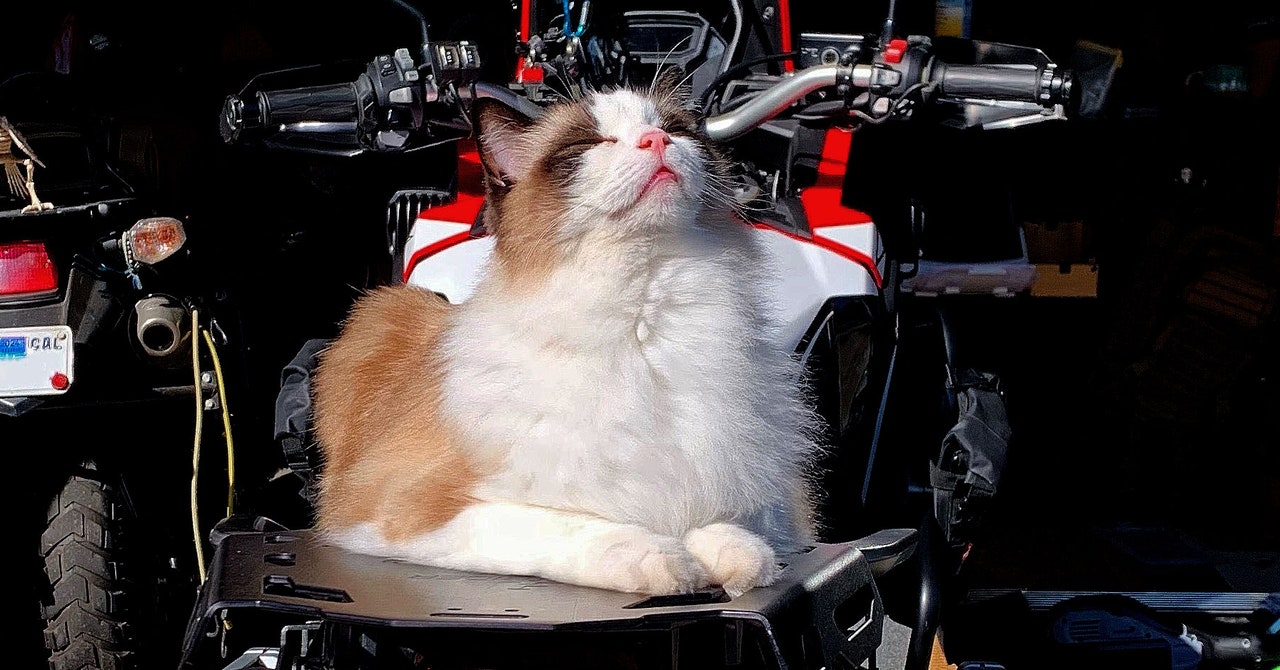
Feline researchers have long believed that purring is produced by voluntary muscle contractions, but a new report indicates that this vibration in the larynx of cats may be explained by the myoelastic aerodynamic theory of phonation.
Studies on the complex action that produces a unique vibration in the larynx of cats—known as purring to most of us—have taken an important turn. It turns out that the biomechanics of the sounds emitted by domestic cats when they feel comfortable or stressed may be closer to a snore than a voluntary muscle spasm.
New research published in Current Biology suggests that connective tissue masses are embedded in the vocal folds of the larynges of domestic cats. These may allow felines to produce self-sustained low-frequency oscillations without neural input or muscular contractions. The researches found that anatomical adaptations—the “pads” of tissue in the vocal fold—respond to air entering the lungs.
What Is a Purr, Really?
Voluntary muscle contractions were thought to cause the vibratory component of purring. A contraction is initiated when the nervous system generates a signal that travels through a motor neuron to a neuromuscular junction. Once there, it releases a chemical message that tenses the fibers and triggers a movement.
The authors of the new study suggest that purring instead results from the laryngeal pads of cats. This is in keeping with the myoelastic aerodynamic theory, which states that vocal fold oscillation is produced as a result of asymmetric forcing functions over closing and opening portions of the glottal cycle. The team argues that the flow of air entering and leaving the lungs activates the vibrations of the vocal cords, producing sounds like that of a human’s voice and characteristic sounds in animals. To test this, the scientists experimented on eight larynges that had been removed from domestic cats (all had been humanely euthanized when diagnosed with terminal illnesses). Their phonetic systems were housed in vertical tubes that supplied warm, moist air similar to the air that enters the body when breathing. The researchers were able to elicit the low-frequency phonation characteristic of purring without neural stimulation.
The study does not rule out the possibility that muscle contractions play a part in purring, but the team argues that there is insufficient evidence to conclude that it’s the sole cause of purring. Instead the research indicates that air dynamics may trigger the vibration mechanism.
Why Do Cats Purr?
Cats purr their entire lives, beginning when they are kittens. Science has not yet fully understood why they purr in every circumstance, but biologists, veterinarians, and animal scientists have reached some general conclusions:
- Kittens purr so their mothers can find them
- Purring encourages the healing of wounds
- Purring produces serotonin, which is why it is often compared to human smiles
- Domesticated cats don’t only purr when they are content, but also when they are stressed
The article’s conclusions have sparked some controversy. Biomechanical engineers interviewed by Science claim that the experiment was limited to verifying the functioning of the larynx in isolation, without taking into account the complex systems of a living cat, which they feel represents a significant oversight. Scientist David Rice, for instance, compared the research to removing the mouthpiece of a wind instrument and then analyzing the noise it produces independently from the context of that instrument.
This article was originally published by WIRED en Español.

